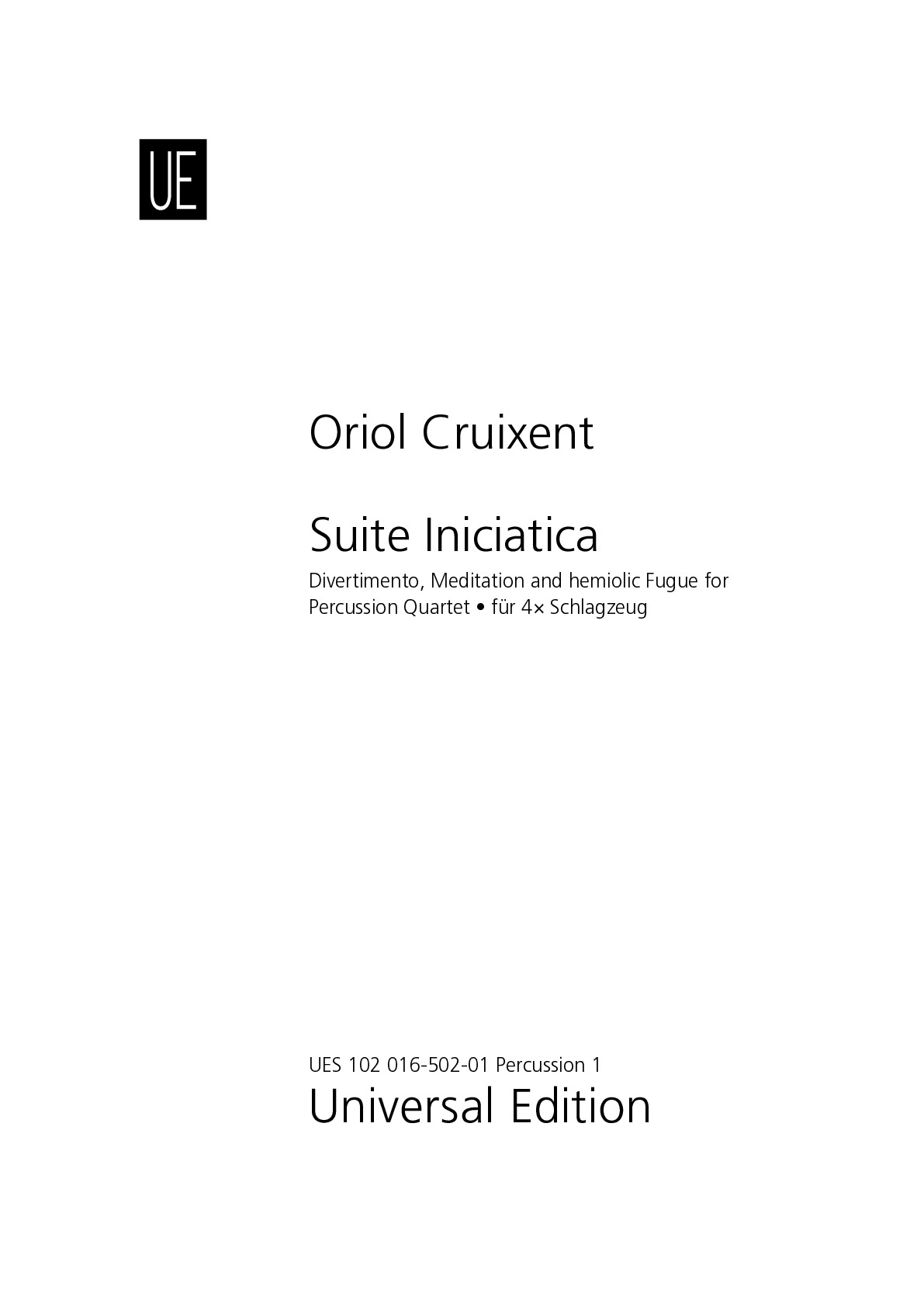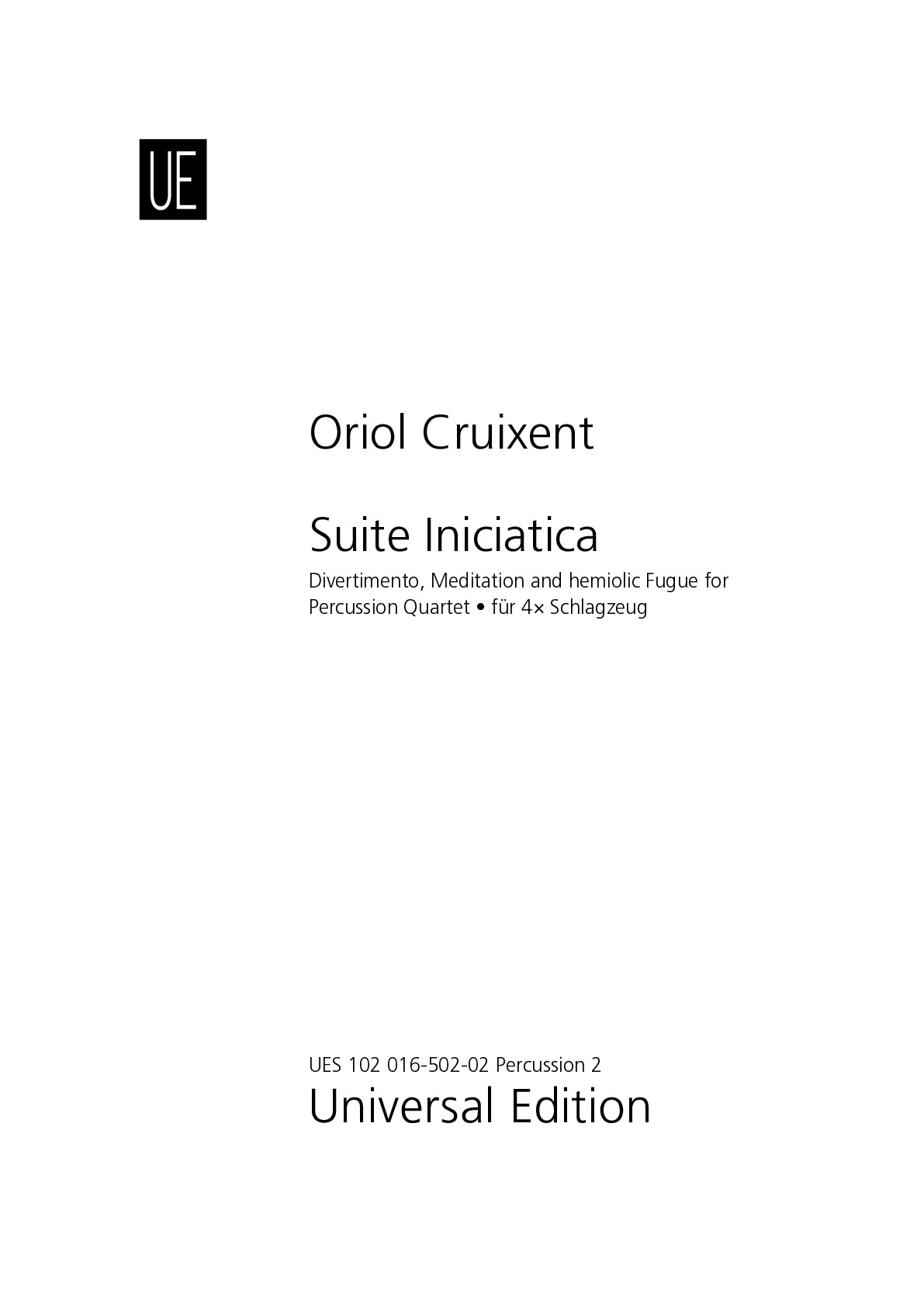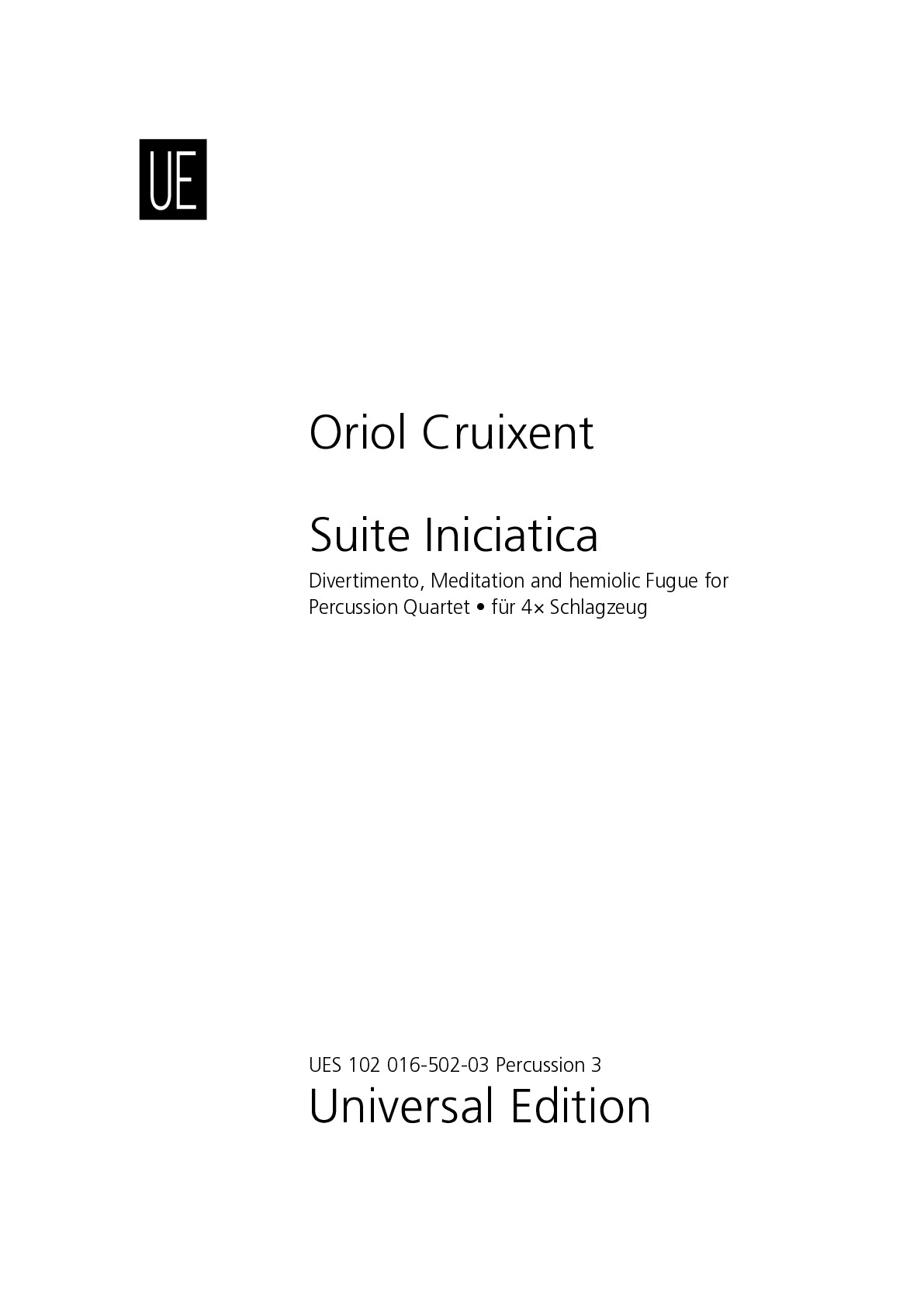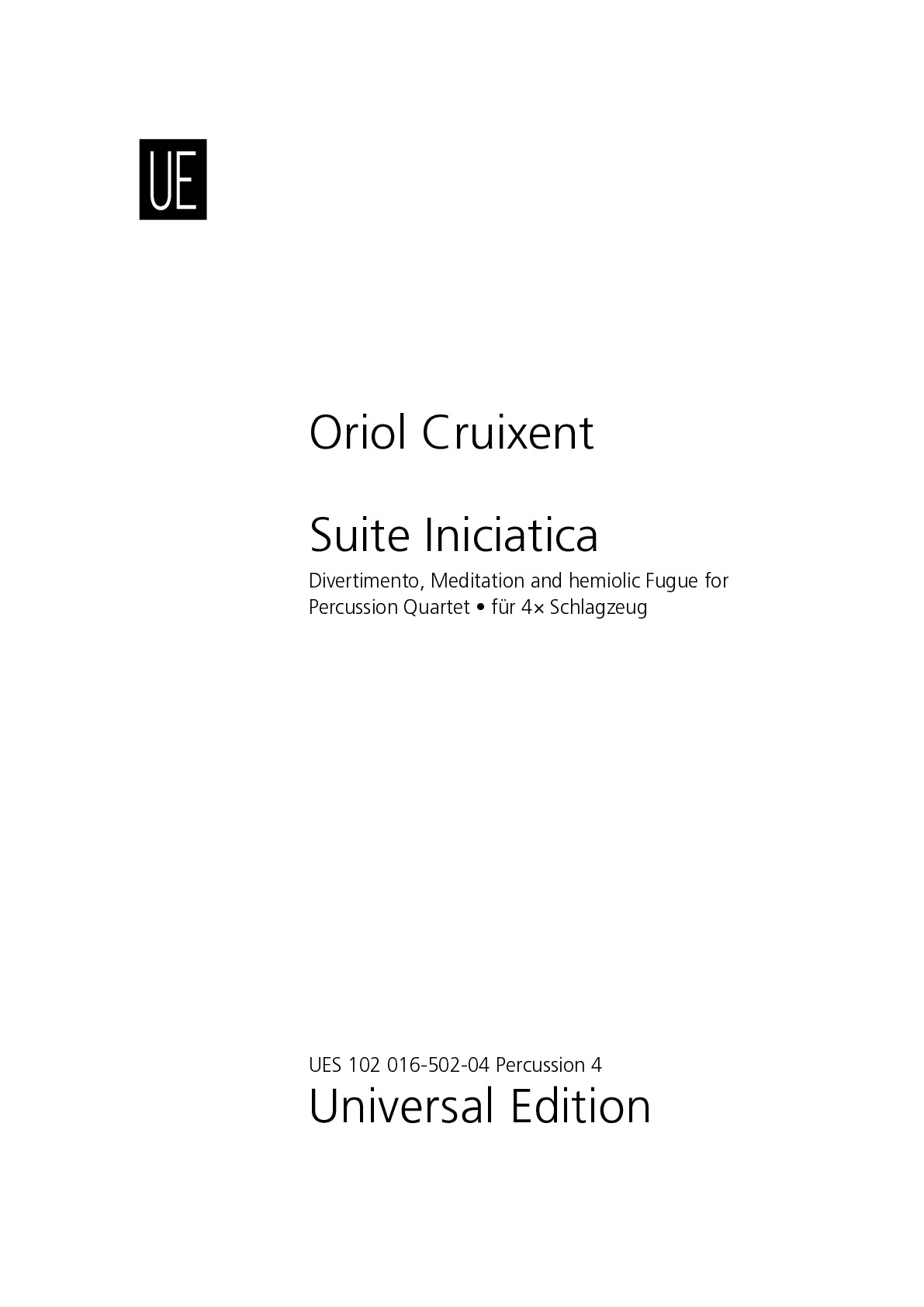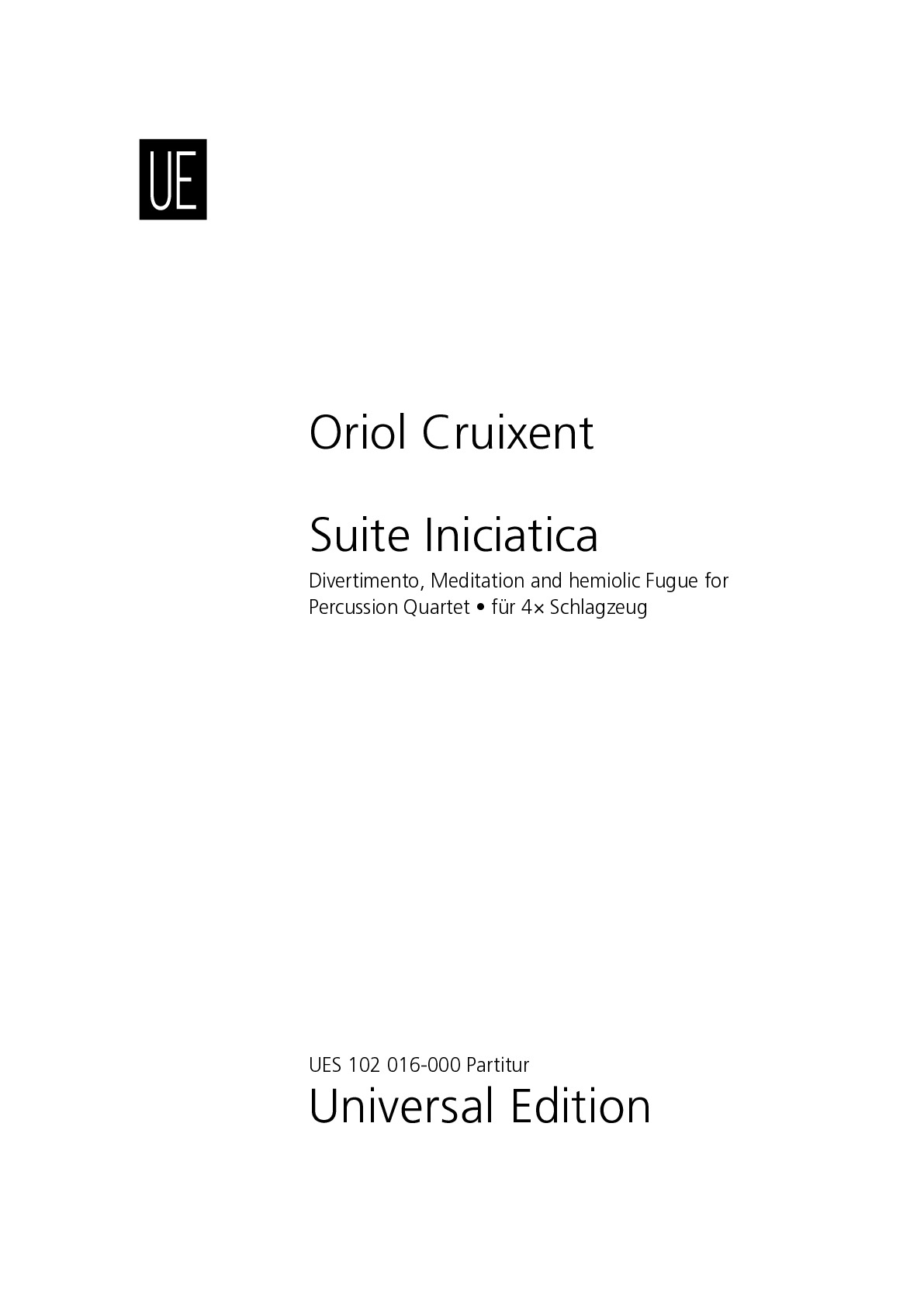

Oriol Cruixent
Suite Iniciàtica
Duration: 25'
Instrumentation details:
1st percussion
2nd percussion
3rd percussion
4th percussion
Suite Iniciàtica
Sample pages
Work introduction
Suite Iniciàtica is a composition in three parts devoted to the oldest purpose of playing drums, thus proposing a musical experience to reach the unknown, i.e. a state of consciousness free from any thought form, completely rooted in the present moment. Suite Iniciàtica was commissioned by the Bavarian State Opera (OPERcussion) and was finished in March 2015.
Part I: Quodlibet. Like the historic quodlibets from the baroque, Quodlibet is a divertimento that combines several melodies and harmonies from distinct, mostly popular origins. Quodlibet was composed using music material inspired by dance rhythms of the Middle Ages as well as by harmonies of the vocal music of the Renaissance.
Part II: Alquímia (i.e. Alchemy) is a tribute to the ancient branch of natural philosophy, who has worked among others with the transmutation of metals and other elements. In every alchemical process, the way, the process of transmutation itself was way more important than the goal. Thus, every transmutation was meant to serve as a metaphore of the process of reaching a state of conscious presence, which was symbolically represented by the metal gold. In the composition Alquímia a transmutation of musical themes from the previous Quodlibet and from the following Èxtasi Hemiòlic takes place, exactly at the golden section of the whole Suite.
Part III: Èxtasi Hemiòlic (i.e. Hemiolic ecstasy) is structured in the form of a four-part Fugue for twelve African drums. This composition was inspired by the african tribal drumming rituals used to reach a state of collective ecstasy (i.e. a state of collective conscious presence) through the use of complex hemiolic rhythms.
What is necessary to perform this work?
INSTRUMENTATION
Perc 1**: Vibraphone 1, Percussion ad lib. (for ex. Darabouka), 3 Drums Soprano*, 3 Drums Alto*
Perc 2**: Vibraphone 2 (shared with Perc. 3 on “Alquímia”), Percussion ad lib. (for ex. Tupan), Energy Chime high G (ca. 1568Hz), Low Drum (Floor Tom or GC), 3 Drums Tenor*, 3 Drums Bass*
Perc. 3: Marimba, Energy Chime high G (ca. 1568Hz), 3 Tibet Bowls (low octave C#-F-A, dark sounding, 3 Gongs or Orchester Schalen or Plates possible), Tam-tam, Vibraphone (shared with Perc. 2 on “Alquímia”), African Bell (big, not too bright sounding. It should sing! Ideally use a handmade original one)
Perc. 4: Tambourine (or similar, a sound of Middle Age Dance should be achieved), Low Drum (Floor Tom or GC), Waterphone, Wind Gong, Gong in G (big, very low octave, ca. 98Hz), Gong in B (big, very low octave.) - (Gong or Orchester Schalen or Plates possible), One shot shaker, 3 Cow-Bells, Shekere (tip: use two different ones, to allow easier dynamic changes between f and p)
* Drums: total amount of 12 drums, divided in 4 groups of 3. Use original ones, (i.e. wood Djembes) or a combination. The lowest ones should sound big (Floor Tom-size, or even BD).
Although the entire "timbre" spectrum from Bass to Soprano should be homogeneous, preferably earthy, it is desired to give every group of three its own "voice", its own character, by accurate choosing of every drum.
** Alternative:
Perc 1: (2 Pairs of Bongos + 2 Congas): Soprano: Bongo Macho + Bongo Macho + Bongo Hembra / Alto: 2 Congas + Bongo Hembra
Perc 2: Tenor: 3 Timbales / Bass: 3 big Djembes or 2 Pow Wows (90cm & 60cm + 1 Djembe)

